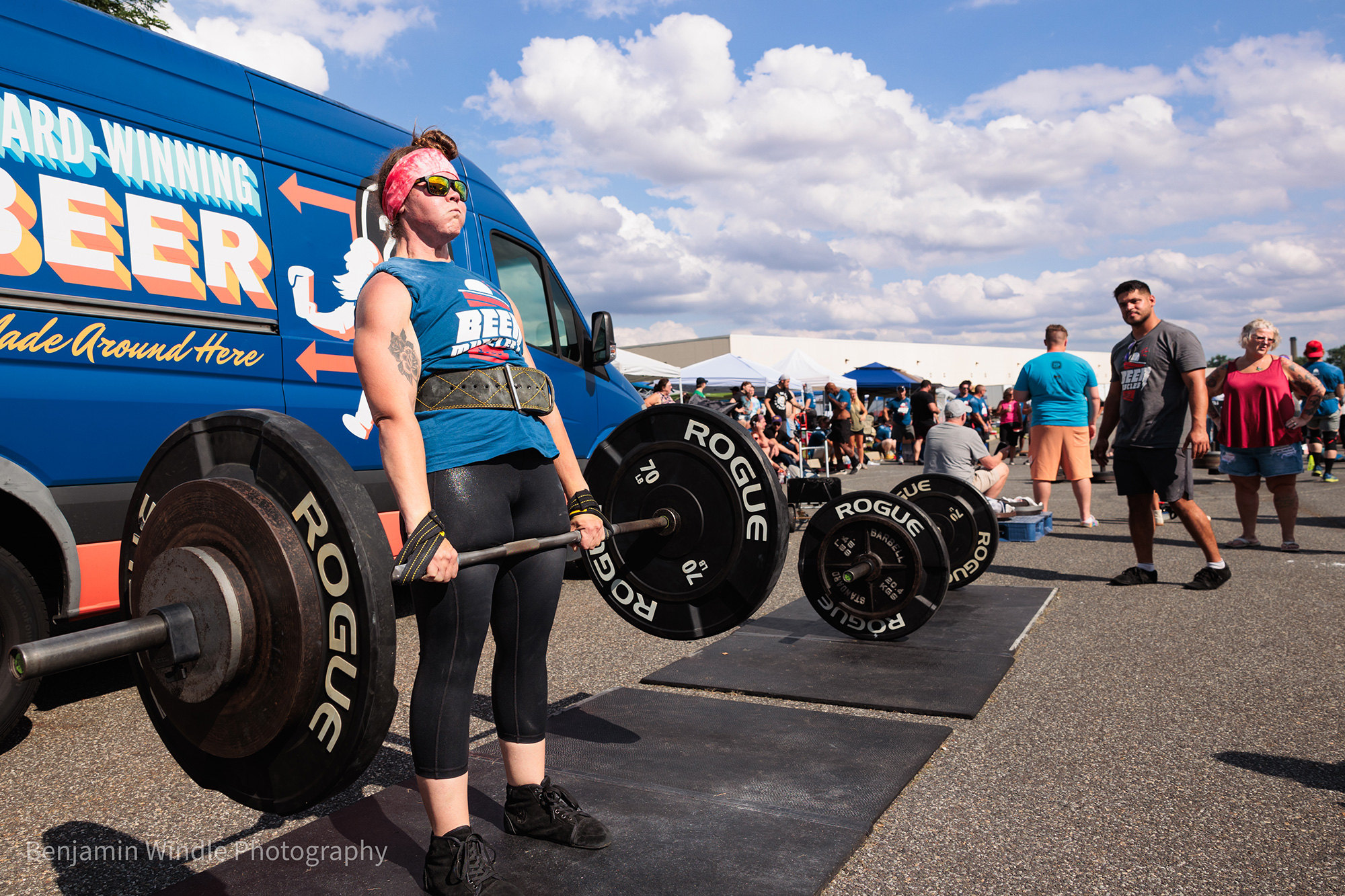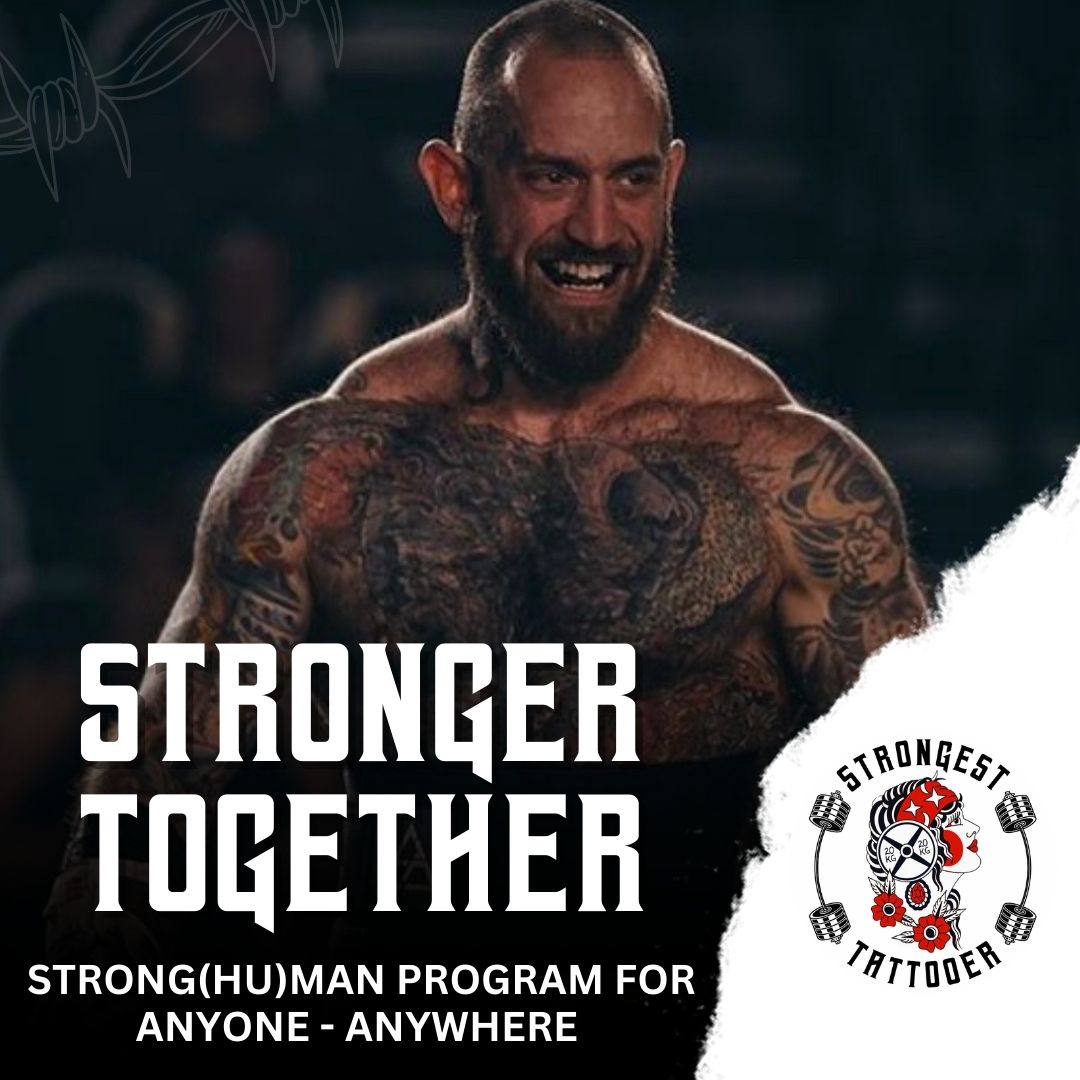
One of the first decisions to make when promoting a strongman competition is what events to have. In almost all cases, it is 100% up to the promoter to choose the events, weights, and overall structure of the competition. If you like overhead events, you can literally promote a show with 5 overhead events. Hate overhead events? You don’t even need to have one.
That being said, there is a pretty standard formula to follow when choosing events, as well as some best practices to make sure the competition is well-attended, fun for the athletes, and runs smoothly.
The Strongman Competition Formula
Most single-day strongman competitions feature 5 events. Those events generally follow this general structure:
- Press/Overhead – eg. axle clean and press, log, circus dumbbell
- Deadlift – eg. axle, 13”, car, frame
- Carrying/Moving – eg. sandbags, sled, yoke, farmers
- Loading – eg. keg over bar, stone series
- “Miscellaneous” – tire flip, arm-over-arm pull, power stairs, sandbag toss
As a general rule, if you choose one event for each of the above categories, you’ll have a decently balanced show.
Balance and Variety
Speaking of balance… It’s important to consider balance and variety in the implement selections as well as format. In this context, “format” means how the event is scored such as max reps, max weight, max distance, speed (“for time”), etc.
A good show has a mix of formats. Here are 2 shows with identical implements but completely different approaches to format:
Show A
- Axle Clean & Press for Max Reps in 60 seconds
- 13” Deadlift for Max Reps
- Sandbag Carry for Max Distance
- Atlas Stone Over Bar for Max Reps
- Sandbag Toss for Max Height
Show B
- Axle Clean and Press for Max Reps in 60 seconds
- 13” Deadlift for Max Weight, last man standing
- Sandbag Carry down and back for time
- Atlas Stone Series, 4 stones to platforms
- Sandbag Series, 5 bags for time
Show B is much more balanced with better event variety. It’ll be more interesting to watch, more fun to train for and compete in, easier to manage for time purposes (which we’ll discuss in depth another time), and a better test of an athlete’s overall abilities.
Equipment and Logistics
Another important consideration is equipment and logistics. If you’re just starting out, it’s best to stick to simple implements that are easy to acquire, maintain, and adjust during competition.
Take into consideration how hard or easy it is to do the following with each implement:
- Load it: both in terms of “plate math” and how physically challenging it is to get weight on and off it
- Adjust it: like if you have to change things out between weight classes (like switching vehicles for a pull) or between athletes (like yoke heights)
- Reset it: think about how easy/hard it is to get the implement back to its exact starting position for each athlete, and what happens if someone fails the lift or runs out of time (like in the middle of a carry event)
It’s okay if one or two of the events require some manpower (like resetting sandbags or a carry medley). But you don’t want all 5 events to be complicated. And it’s important to make sure you have enough volunteers on competition day to handle any of the more labor intensive events.
Ten times out of ten, athletes will prefer a well-run competition with standard/basic strongman events over a sloppy competition with “creative” implements that fall apart or are confusing to use and hard to reset. So err on the side of caution, especially if you’re a newer promoter.
If you’re feeling saucy and want to get a custom piece built, make sure you budget for it and have the piece in hand a minimum of one month prior to competition day so you can test it, choose appropriate weights, and work out any kinks. The sooner you can get your hands on it the better.
Miscellaneous Things to Keep in Mind
Medleys
Medleys are cool and fun. They’re also very equipment-intensive and require more time to set up and change between classes. You also don’t want an event that’s all medleys because it’s too much work on competition day, and it’s a huge pain in the ass for the athletes to train that many implements. So it’s definitely great to include them, just be smart about it.
Max Events
Anything for max weight takes forever. There are usually 2 styles of max weight events: 3 attempts (“Wessels Rule”) or Last Man Standing. With Wessels Rule, each athlete can take a max of 3 attempts, skipping whatever jumps they don’t want. If they fail an attempt (even if it’s the first one), they’re done. For Last Man Standing, athletes can take as many jumps as they want. Some events allow you to skip weights along the way, and some don’t.
It is much more efficient to run a max event on Wessels Rules. It prevents athletes from taking a million attempts (which they will, especially at local shows). And regardless of which one you choose, plan about 75 seconds per attempt per athlete. So a group of 20 athletes doing Wessels Rules deadlifts would probably take 75 minutes (20 athletes x 3 attempts x 75 seconds per attempt).
Even though the athletes are on a clock (usually 30 seconds for each attempt), you have to factor in weight changes and time between each athlete. Lighter classes usually take less time than heavier classes. And groups with a single class will be quicker than groups with mixed classes (because the spread from lightest to heaviest attempt will be smaller in single-class groups).
A Note About Event Order
We’ll discuss event order in greater detail in another post. For now, it’s important to know that event order matters and it varies from show-to-show. Even if you have different weight classes doing the events in different orders, it’s still always nice to think about how the events stack on top of each other. For example, it’s super crappy to deadlift and then do stones right after. It happens, and sometimes it’s the only option. But if you can be thoughtful about it, that’s ideal.
You should also consider how long each event takes. A show will run better if time-consuming events aren’t back-to-back. For example, a longer event like max deadlift should be followed by a shorter one like down-and-back yoke run (or vice versa). This helps things run more smoothly and prevents any one event from getting backed up throughout the day.
The last thing to consider for event order is equipment availability if you have events running simultaneously. For example, MW Men and HW Men use the most plates. So you might not want them both doing plate-heavy events at the same time (like yoke and deadlift). It’s smarter to have one do overhead or loading (generally fewer plates) while the other does deadlifts (generally more plates).
Go Choose Some Events!
Now it’s time to plan your show! Start with an outline of the “Big 5,” fill in implements you want to include, choose formats that make sense and provide balance, put them in a thoughtful order, and do the damn thing.
And if you need help, let us know! Email us (strongmandottraining@gmail.com) with any questions or to set up a free 15-min event consulting call.



